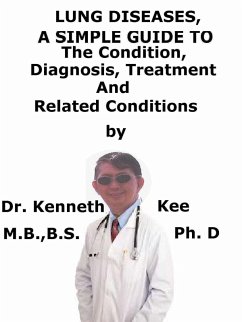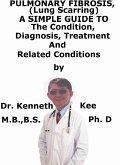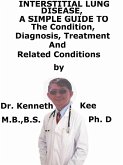The lungs comprise a pair of air-filled organs situated on either side of the chest.
The windpipe brings inhaled air from the nose or mouth into the lungs through its tubular branches called bronchi.
The bronchi then separate into smaller and smaller branches (bronchioles) finally becoming microscopic.
The bronchioles eventually end in microscopic air sacs called alveoli.
In the alveoli the oxygen from the air inhaled is absorbed onto the red blood cells.
Carbon dioxide is a waste product of metabolism that is transported from the blood to the alveoli where it can be exhaled.
Between the alveoli is a thin layer of cells which contains blood vessels and cells that help support the alveoli.
The lungs are covered by a thin tissue layer (pleura) which also line the inside of the chest cavity.
A thin layer of fluid in the pleural cavity works as a lubricant allowing the lungs to move smoothly as they expand and contract with each breath.
When a person breathes in, the diaphragm and the muscles between the ribs contract and expand the chest cavity.
This expansion reduces the pressure in the chest cavity to less than the outside air pressure.
Air then enters through the airways from high pressure to low pressure and inflates the lungs.
When a person breathes out, the diaphragm and intercostal muscles relax and the chest cavity gets smaller.
The reduction in volume of the cavity raises the pressure in the chest cavity above the external air pressure.
Air from the lungs (high pressure) then passes out of the airways to the external air (low pressure).
The cycle then repeats with each breath.
Lung and diseases:
Diseases or disorders of the lung are classified mainly into 2 classes:
Diseases that affect the mechanics of breathing:
1.Asthma:
The bronchioles narrow due to allergy or irritants, reducing the size of the airways and the flow of air and making the respiratory muscles work harder.
2.Emphysema is another disease of the lungs where the elastin in the walls of the alveoli is damaged by an imbalance between the formation of neutrophil elastase and alpha-1-antitrypsin (due to genetics or reaction of a vital methionine residue with toxins such as cigarette smoke).
3.Bronchitis:
The airways become inflamed and constrict which reduce the flow of air and raises the work of the respiratory muscles
4.Pneumonia is an infection of the lung parenchyma which can be produced by both viruses and bacteria.
If this occurs to such a degree that the patient cannot draw enough oxygen from his or her environment to sustain cellular respiration, then the person may require supplemental oxygen.
5.Acute respiratory distress syndrome (ARDS) is the severe inflammatory disorder of the lung that normally needs mechanical ventilation in an intensive care unit.
6.Pneumothorax:
Air pressure in the pleural cavity from trauma causes the lungs to collapse.
7.Lung cancer is a frequent form of cancer causing the unregulated growth of cells in the lung tissue.
Diseases that minimize or prevent gas exchange:
1.Pulmonary edema:
Fluid between the alveolus and pulmonary capillary accumulates which raises the distance over which gases must exchange and decreases the exchange.
2.Smoke inhalation:
Smoke particles cover the alveoli and stop the exchange of gases.
3.Carbon monoxide poisoning:
Carbon monoxide attaches to hemoglobin more tightly than either oxygen or carbon dioxide reducing the delivery of oxygen to the tissues of the body such as the brain, heart and muscles.
4.A work related lung disorder is caused by work injuring the lungs such as silicosis and Asbestosis
TABLE OF CONTENT
Introduction
Chapter 1 Lung Diseases
Chapter 2 Work Related Lung Diseases
Chapter 3 Pulmonary Fibrosis
Chapter 4 Chronic...
Dieser Download kann aus rechtlichen Gründen nur mit Rechnungsadresse in A, B, CY, CZ, D, DK, EW, E, FIN, F, GR, H, IRL, I, LT, L, LR, M, NL, PL, P, R, S, SLO, SK ausgeliefert werden.









